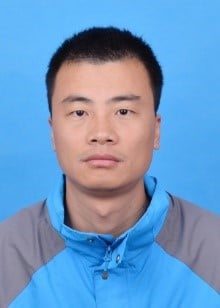Application and Challenges of UAV in Space-Air-Ground Integrated Communication Network
A special issue of Drones (ISSN 2504-446X). This special issue belongs to the section "Drone Communications".
Deadline for manuscript submissions: closed (16 January 2024) | Viewed by 8752
Special Issue Editors
Interests: semantic computing; future internet architecture; network virtualization; artificial intelligence for networking
Special Issues, Collections and Topics in MDPI journals
Interests: satellite communication; space reconnaissance; array signal processing
Interests: energy efficiency; Internet of Things; edge and cloud infrastructure; scheduling and resource management; algorithms, machine learning; mobile edge computing
Special Issues, Collections and Topics in MDPI journals
Interests: radio wave propagation over fading channels; wave scattering in random media; optical wireless communications
Special Issues, Collections and Topics in MDPI journals
Special Issue Information
Dear Colleagues,
At present, the continuous progress of information and network technology has become the leading force of innovation-driven development, which has a profound impact on the political, military, economic, and cultural fields, as well as others. It is driving the transformation and reconstruction of the social system. As an important information infrastructure supporting social development, the ground information network and space-based information network have been developed independently for a long time, with increasingly prominent limitations. It is difficult to meet the needs of global network coverage, security, autonomous control, and flexible access for various users. In recent years, the information network has been gradually integrated and developed. Relevant research has put forward the development vision of the space–space integrated information network and the space–space integrated wireless communication network based on the 6th generation mobile communication technology (6G). As a new network architecture paradigm, the technical development of the space–air–ground integrated network has gradually become a main research topic.
UAV has a wide range of applications and many advantages in mobile communication. However, due to its small size and limited load capacity and energy storage, it cannot work for a long time in a long distance. Therefore, the research on energy supply and low power consumption is still the main problem.
This topic aims to bring together relevant researchers from the industry and academia to share their latest discoveries and developments in this field. The topics of interest include, but are not limited to, the following:
- Space–air–ground integrated networks: review and prospect.
- Optimal deployment of THE gateway and SDN controller in space–air–ground integrated network.
- Optimizing space–air–ground integrated networks by artificial intelligence.
- Resource allocation and trajectory optimization of UAV security communication system.
- Energy efficient resource allocation for UAV-assisted space–air–ground Internet of remote things networks.
- Computing over space–air–ground integrated networks.
- Algorithm for optimizing the throughput of space–air–ground integrated network.
- Research on UAV networking technology in space–air–ground integration networks.
- Space–air–ground integration network technology based on software definition.
- The multi-layer architecture of space–air–ground integrated network for Internet of Things.
- Routing protocol of space–air–ground integrated network.
- Task scheduling in space–air–ground integrated network.
- UAV communication link selection strategy in the space–air–ground integrated network.
- Mobile edge computing technology for space–air–ground integrated network.
- UAV auxiliary communication deployment strategy based on reinforcement learning.
Dr. Peiying Zhang
Prof. Dr. Sheng Wu
Dr. Zakarya Muhammad
Prof. Dr. Guanjun Xu
Guest Editors
Manuscript Submission Information
Manuscripts should be submitted online at www.mdpi.com by registering and logging in to this website. Once you are registered, click here to go to the submission form. Manuscripts can be submitted until the deadline. All submissions that pass pre-check are peer-reviewed. Accepted papers will be published continuously in the journal (as soon as accepted) and will be listed together on the special issue website. Research articles, review articles as well as short communications are invited. For planned papers, a title and short abstract (about 100 words) can be sent to the Editorial Office for announcement on this website.
Submitted manuscripts should not have been published previously, nor be under consideration for publication elsewhere (except conference proceedings papers). All manuscripts are thoroughly refereed through a single-blind peer-review process. A guide for authors and other relevant information for submission of manuscripts is available on the Instructions for Authors page. Drones is an international peer-reviewed open access monthly journal published by MDPI.
Please visit the Instructions for Authors page before submitting a manuscript. The Article Processing Charge (APC) for publication in this open access journal is 2600 CHF (Swiss Francs). Submitted papers should be well formatted and use good English. Authors may use MDPI's English editing service prior to publication or during author revisions.
Keywords
- space–air–ground integrated network
- mobile edge computing
- UAV
- communication network







